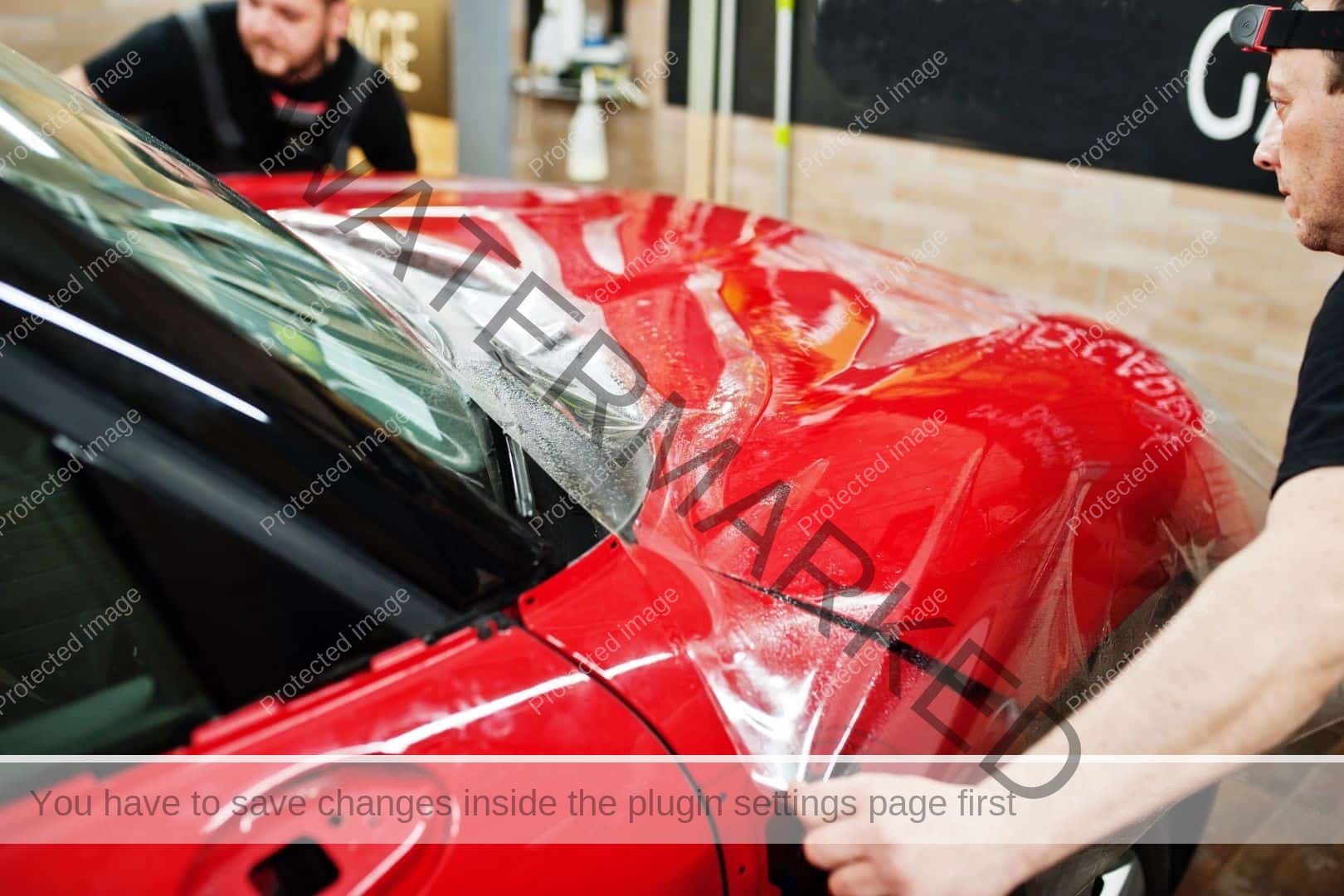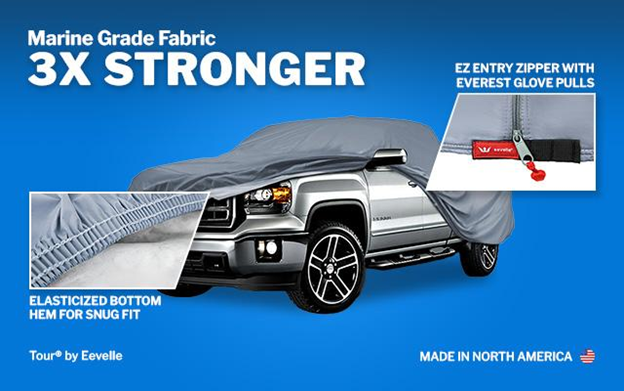If you’ve ever parked your car in a crowded lot, driven down a gravel road, or watched in horror as bird droppings left their mark on your pristine paint job, you understand the frustrations of keeping your vehicle looking new. Every car owner wants their car to remain in showroom condition, but life has other plans! So, what’s the solution? Enter paint protection film, a modern, invisible superhero designed to protect your car’s paint from everyday hazards.
In this article, we’ll dive into how paint protection film (PPF) works, why it’s worth considering, and how it protects your car from the wear and tear that comes with everyday driving. Let’s explore the ins and outs of this remarkable innovation that’s helping car owners keep their paintwork flawless.
Table of contents
- What is Paint Protection Film (PPF)?
- The Everyday Hazards Your Car Faces
- How Paint Protection Film Shields Your Car
- Benefits of Using Paint Protection Film
- Types of Paint Protection Films
- Installation Process: What to Expect
- DIY vs. Professional Installation
- Caring for Your Paint Protection Film
- Paint Protection Film vs. Ceramic Coatings
- Is Paint Protection Film Worth the Investment?
- Tips for Choosing the Right Paint Protection Film
- How Long Does Paint Protection Film Last?
- Debunking Common Myths About Paint Protection Film
- Who Should Consider Paint Protection Film?
- Conclusion: Keeping Your Car’s Paint Pristine
- FAQs
What is Paint Protection Film (PPF)?
Paint protection film (PPF) is a transparent, thin layer of thermoplastic urethane applied to a vehicle’s painted surfaces. Originally used by the military to protect helicopter blades from debris, it has since evolved into a popular solution for preserving automotive paint. Today, PPF is highly advanced, offering self-healing properties, stain resistance, and powerful protection from various hazards that vehicles encounter daily.
The Everyday Hazards Your Car Faces
Life on the road is tough on a car’s paint. Let’s break down some common threats:
- Road Debris: Gravel, sand, and tiny rocks often kick up from the road, leading to tiny chips and scratches.
- Weather Elements: Rain, UV rays, and hail can wear down paint over time.
- Bird Droppings and Bugs: Organic materials like bird droppings and insect remains can be highly acidic, damaging paint if left unaddressed.
- Tree Sap and Pollen: Parking under trees might seem safe, but sap and pollen can be challenging to remove and may even cause stains.
PPF is designed to combat these hazards, making it an invaluable asset for car owners.
How Paint Protection Film Shields Your Car
Think of PPF as a clear shield. It absorbs the impact of debris and minor abrasions, preventing them from reaching your car’s paint. When applied, PPF creates a barrier that deflects potential damage, keeping your car’s paint in pristine condition.
Some PPFs are even self-healing. Small scratches disappear on their own due to the elasticity of the film’s material, which returns to its original form under heat or sunlight. So, not only does PPF prevent damage, but it also “heals” itself, ensuring your vehicle maintains its flawless look over time.
Benefits of Using Paint Protection Film
There are several reasons why car enthusiasts and everyday drivers alike are opting for paint protection film:
- Protection from Scratches and Chips: PPF provides an extra layer to take the brunt of small abrasions and prevent minor damage.
- Resilience Against Environmental Contaminants: With PPF, your car has a defense against bird droppings, sap, and bug splatters, making them easier to clean and less likely to stain.
- Preserved Paint Quality: PPF helps maintain your car’s paint quality, reducing the need for touch-ups or repainting.
- Self-Healing Properties: Minor scratches vanish on their own, keeping your car looking fresh without requiring constant attention.
In essence, PPF acts like a raincoat for your car’s paint—protecting it from outside elements and helping it last longer.
Types of Paint Protection Films
Paint protection films come in various types, each offering unique benefits:
- Clear PPF: Traditional, transparent film that doesn’t alter the appearance of the car.
- Matte PPF: Offers a matte finish, changing the look of glossy paint to a more muted appearance.
- Colored PPF: These come in various colors, adding a stylish touch to the car while offering protection.
Different types of PPF cater to different preferences, whether you’re looking to maintain your car’s original appearance or experiment with a new look.
Installation Process: What to Expect
The process of applying PPF involves cleaning, prepping, and carefully placing the film over your car’s painted surfaces. Professionals often use precision tools to ensure the film fits seamlessly, creating a nearly invisible protective layer.
Installation typically takes a few hours to a full day, depending on the extent of the application. Some car owners opt for partial coverage, focusing on high-impact areas like the hood, fenders, and mirrors, while others prefer full-body protection.
DIY vs. Professional Installation
While it’s tempting to try applying PPF yourself, professional installation generally yields better results. Professionals have the tools, training, and experience needed to apply the film without bubbles, creases, or gaps. DIY kits are available, but they require patience and skill to avoid mistakes. For most, the investment in a professional installation pays off in quality and durability.
Caring for Your Paint Protection Film
Maintaining PPF is simple but essential for longevity. Here are a few tips:
- Regular Washing: Hand wash with mild soap and water to prevent dirt buildup.
- Avoid Harsh Chemicals: Strong solvents or abrasive cleaning tools can damage the film.
- Refrain from Waxing: Avoid waxing over PPF, as some products may cause discoloration or residue buildup.
With proper care, PPF can last for years, offering consistent protection and maintaining its clear finish.
Paint Protection Film vs. Ceramic Coatings
Many wonder how PPF compares to ceramic coatings. While both provide protection, they work in different ways:
- PPF: Acts as a physical shield, absorbing impacts and preventing scratches.
- Ceramic Coatings: Offers a hydrophobic layer that repels water and prevents contaminants from bonding to the paint.
For maximum protection, some car owners use both, applying a ceramic coating over PPF to enhance the shine and ease of cleaning.
Is Paint Protection Film Worth the Investment?
Yes, especially for those who value their car’s appearance and want to reduce paint maintenance costs. While PPF involves an upfront investment, it saves money over time by minimizing the need for paint repairs, touch-ups, and detailing. For many, this peace of mind alone makes it worthwhile.
Tips for Choosing the Right Paint Protection Film
When selecting PPF, consider the following:
- Quality: Opt for trusted brands with strong warranties.
- Thickness: Thicker films offer more protection but may be slightly more visible.
- Type of Finish: Decide if you want a matte, gloss, or colored film based on your preference.
Discuss your options with a professional to find the film that best suits your needs and budget.
How Long Does Paint Protection Film Last?
Most high-quality PPF can last between five to ten years, depending on environmental factors and care. Regular maintenance and gentle washing will keep it looking great and performing effectively. Over time, UV exposure and other factors may lead to wear, but with proper upkeep, PPF can provide enduring protection.
Debunking Common Myths About Paint Protection Film
“PPF makes the car look unnatural.”
False. Modern PPF is nearly invisible, enhancing your car’s appearance without altering its color.
“PPF is only for luxury cars.”
While luxury cars benefit, PPF is for any car owner who wants to preserve their vehicle’s paint, regardless of the car’s value.
“Once applied, it’s permanent.”
PPF can be removed without damaging the paint underneath, so it’s not a permanent commitment.
Who Should Consider Paint Protection Film?
PPF is ideal for anyone who wants to keep their car in excellent condition, from luxury car owners to those who frequently travel on rough roads. If you love keeping your car in prime condition and are tired of dealing with minor paint damage, PPF is worth considering.
Conclusion: Keeping Your Car’s Paint Pristine
In a world where every drive comes with the risk of damage, paint protection film stands out as a simple, effective solution. It’s a way to preserve your car’s look and value, keeping it in showroom condition for longer. While it requires an initial investment, the benefits far outweigh the costs, especially when you consider the long-term savings in paint repairs.
FAQs
1. How long does paint protection film last on a vehicle?
High-quality PPF typically lasts between five to ten years, depending on factors like care and environmental exposure.
2. Can I remove paint protection film myself?
Yes, PPF can be removed without damaging the paint, but professional removal is recommended to avoid residue or minor scratches.
3. Is paint protection film visible on the car?
Modern PPF is designed to be virtually invisible, preserving the car’s natural look without altering its color.
4. Does paint protection film affect waxing or polishing?
It’s best to avoid waxing directly over PPF, as certain products can interfere with the film’s appearance. Speak to a professional for compatible products.
5. Can paint protection film be applied to any car color?
Yes, PPF is clear and suitable for any color, allowing car owners with any paint type to benefit from its protective qualities.




2 thoughts on “How Paint Protection Film Helps Prevent Paint Damage from Everyday Hazards”
Thank you, your article surprised me, there is such an excellent point of view. Thank you for sharing, I learned a lot.
Your article helped me a lot, is there any more related content? Thanks!